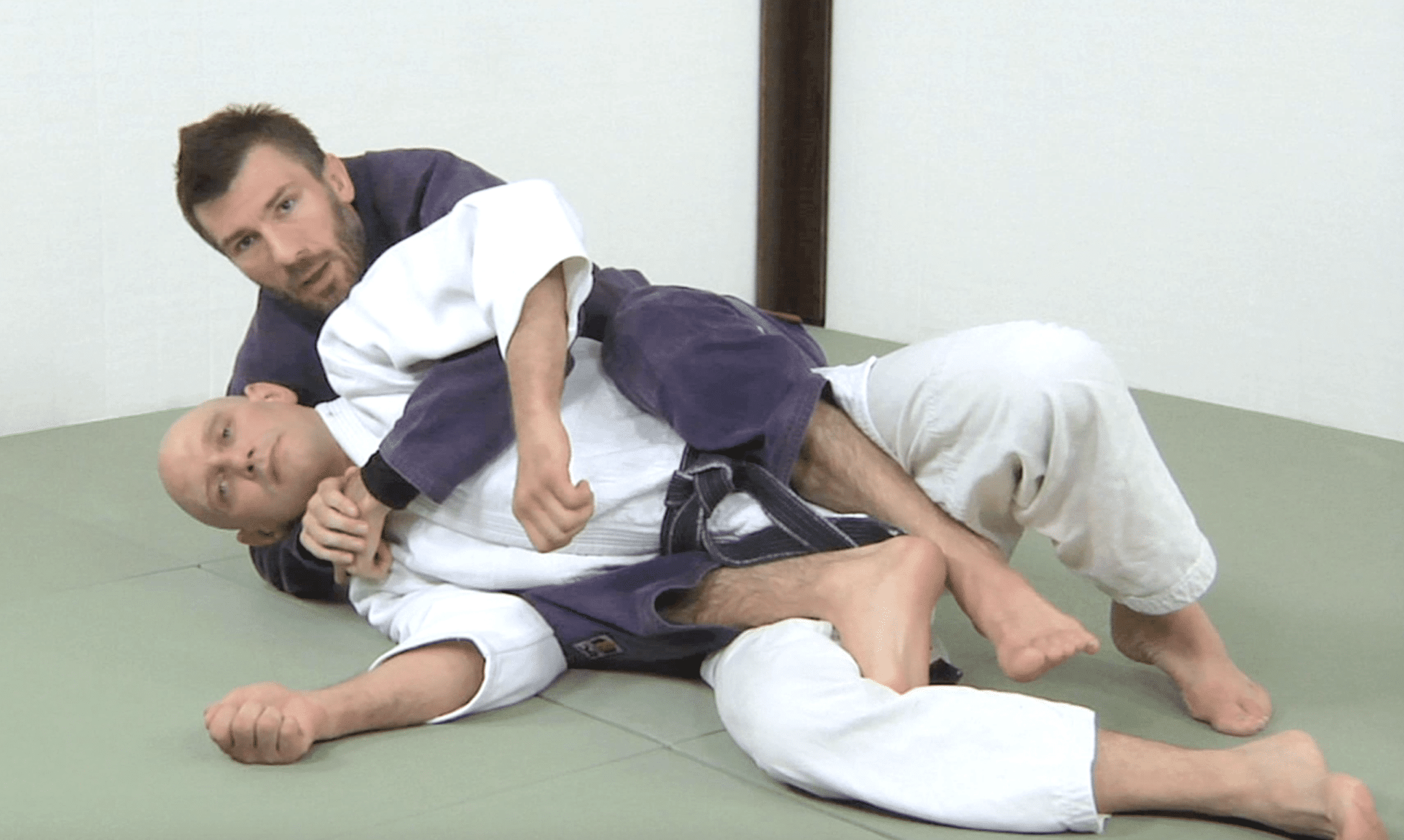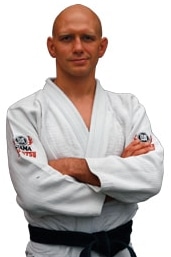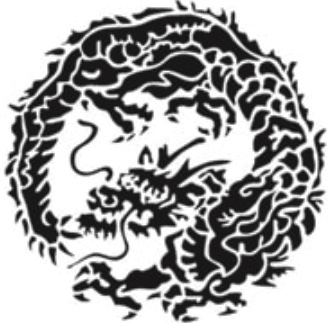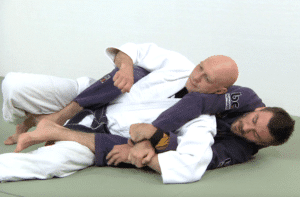
It turns out that the rearmount is a controversial position.
On the one hand it’s widely acknowledged as a position of total domination. If you get to the rearmount then your opponent should be in deep trouble.
In the last 10 years it’s become widely accepted that the over-under arm position (aka the ‘harness grip’ and/or the ‘lasso’) is probably the most powerful way of controlling your opponent’s upper body with your arms.
In the over-under arm position one arm goes OVER your opponent’s shoulder and one arm goes UNDER your opponent’s armpit.
You are considered to be on the STRONG side of rearmount if you’re lying on the side of your overhook. Your opponent’s head will be resting on your biceps (I call this the ‘head on the pillow’ position).
The image at the very top of this article shows strong side control. Rob’s right arm is over my right shoulder and we are resting on our right sides.
Conversely you are on the WEAK side of the rearmount if you’re lying on the underhook side of your grip.
Here is an example of weak side control: Rob’s left arm is under my left armpit, and we are both on our left sides. In the photo below Rob is also using a Kimura grip to control me from escaping (more on that in the final video towards the bottom of the page).
In our recent instructional (The BJJ Back Attacks Formula) Rob Biernacki and I came down very strongly in favour of the strong side of the rearmount. If you get to the rearmount and have a choice then we think you should fall to the strong side.
(Incidentally trying to get to the strong side is also advocated by Marcelo Garcia, who is arguably the competitor most skilled in taking the back and finishing from there in recent times.)
Here is an excerpt in which we advocate specifically for the strong side of rearmount over the weak side…
But it’s important to point out that not everyone agrees. For example, Rener Gracie is an advocate for the weak side of rearmount.
Essentially he argues that the strong side of rearmount is only good for the Rear Naked Choke, whereas the weak side allows a greater variety of armbar and triangle attacks.
Check out his logic here:
Some of our readers and viewers were confused by this apparent discrepancy. How can some people be recommending the strong side, while others are advocating just as passionately for the weak side?
This discussion prompted Rob and I to shoot another video in which we attempt to explain the differences between strong side and weak side rearmount choices.
Here’s the latest video in the strong vs weak side debate which tries to break down the pros and cons for you…
Among other things this video above discusses…
- the role of gi vs no gi in making the choice between strong and weak side rearmount
- how the Kimura grip is essential if you want to be a weak side player
- what is the ideal body type for each style of rearmount
- and more…
Experiment with these ideas and see which work for you.
Strong side for life!!
Stephan Kesting
P.S. Click here to find out more about our Back Attacks Formula instructional. This contains more than 3 hours of step-by-step instruction on taking the back, staying on the back, and submitting your opponent from the back.



